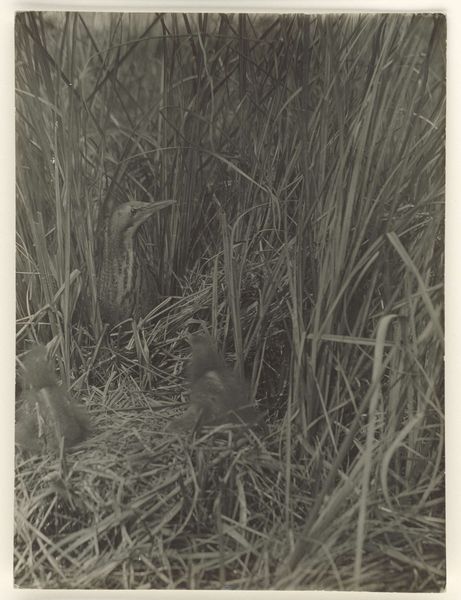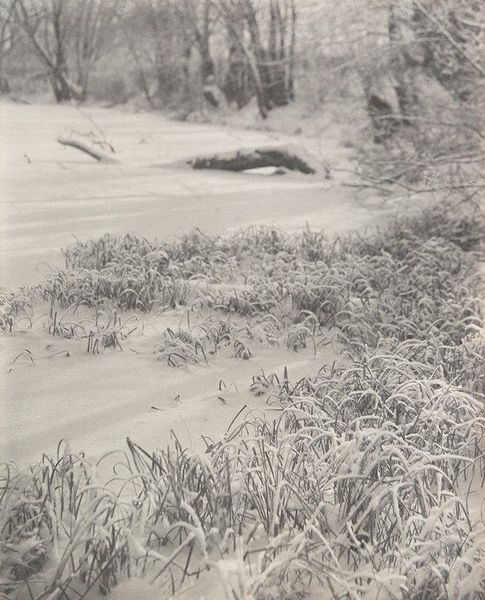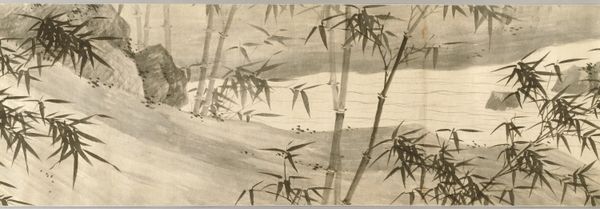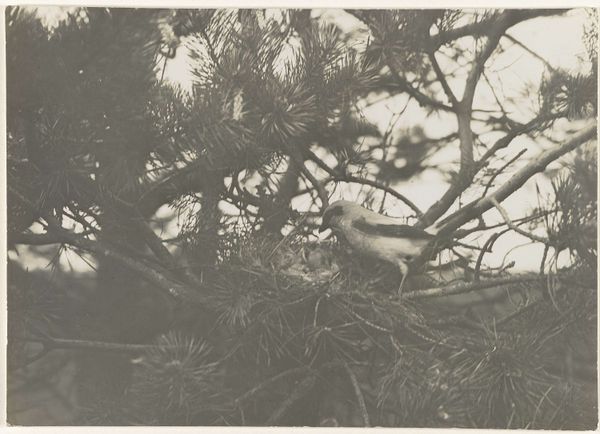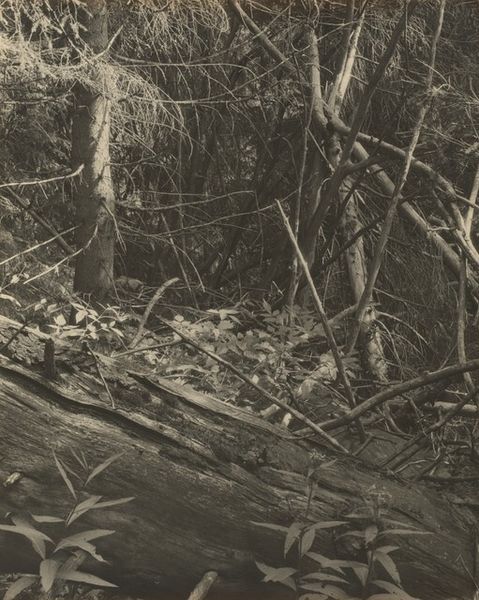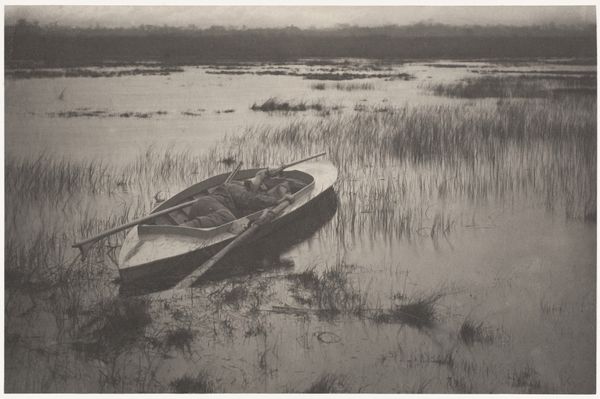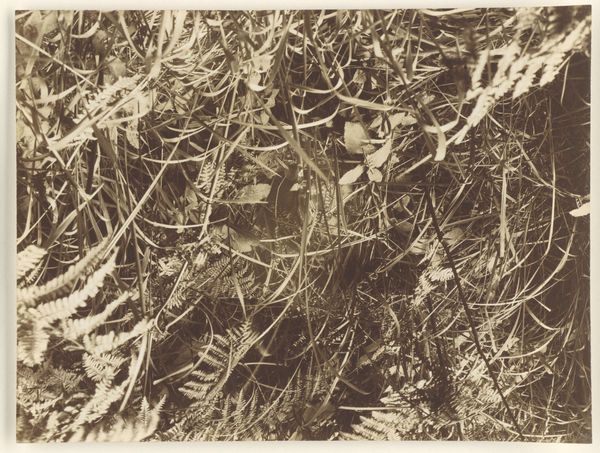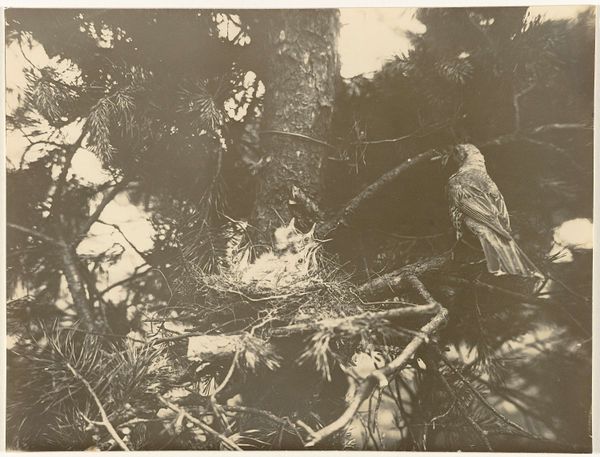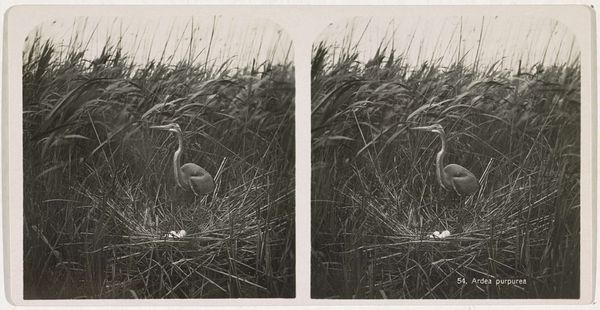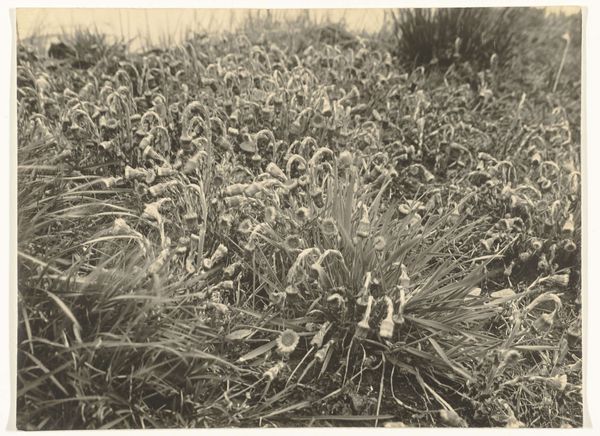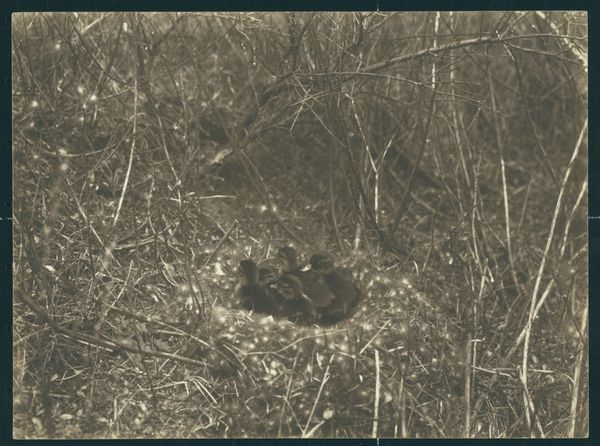
photography
#
still-life-photography
#
pictorialism
#
landscape
#
photography
#
realism
Dimensions: height 117 mm, width 169 mm
Copyright: Rijks Museum: Open Domain
Curator: Welcome. Here we have "Drijvend nest van een zwarte stern bij het Naardermeer"—a photograph captured by Richard Tepe, likely sometime between 1900 and 1930. It portrays the floating nest of a black tern in the Naardermeer. What’s your immediate take on this piece? Editor: It’s a deeply serene and, frankly, melancholic image. The tonal range, confined mainly to sepia, creates a very subdued atmosphere, drawing the eye to the fragile nest in the midst of a wild landscape. Curator: Absolutely. Tepe employs a pictorialist approach here, where photography mimics the effects of painting, seen through soft focus and careful composition. Note how the reeds in the foreground frame the central subject, that nest with its precious contents. It’s all quite deliberately arranged. Editor: But the subject itself, a vulnerable nest floating exposed in the Naardermeer, speaks volumes beyond composition. What were Tepe's environmental politics at the time? A vulnerable animal such as the black tern likely means more to the photograph than just aesthetics. Curator: Pictorialism often sought to elevate photography to the status of fine art, concentrating on beauty and emotional resonance rather than stark documentation. Consider how the textures are rendered, with a noticeable emphasis on the play of light on water and foliage, further contributing to its atmospheric depth. Editor: But how complicit is beauty if it only acts to cover reality, as so often happens? The nest isn’t merely floating; it's fighting for survival, which has real political dimensions in our current epoch. By focusing too exclusively on technique, are we not potentially whitewashing those aspects? Curator: Not at all, for it’s through those techniques that he invites a profound connection with the natural world. He makes us contemplate not just the image but the broader sphere. Editor: I understand your reading but still see a sense of alienation. It's like a stage set with everything in its place, while in the real world those nests often succumb to various types of human interference. Maybe that’s where the true tension lies, hidden beneath Tepe's masterful artistry. Curator: Perhaps it’s in that tension between beauty and fragility where its enduring power resides. Tepe offers us both an aesthetic encounter and an invitation for something beyond. Editor: Agreed. Viewing art through an intersectional lens definitely enriches our understanding and can guide future actions toward preservation, awareness, and justice.
Comments
No comments
Be the first to comment and join the conversation on the ultimate creative platform.
